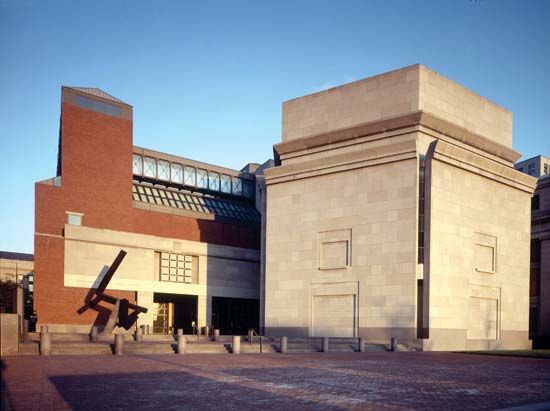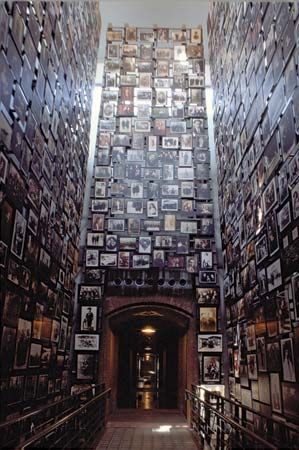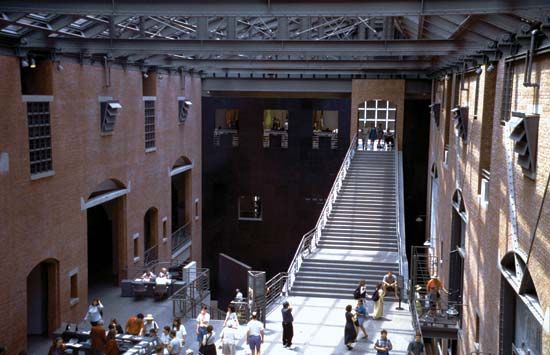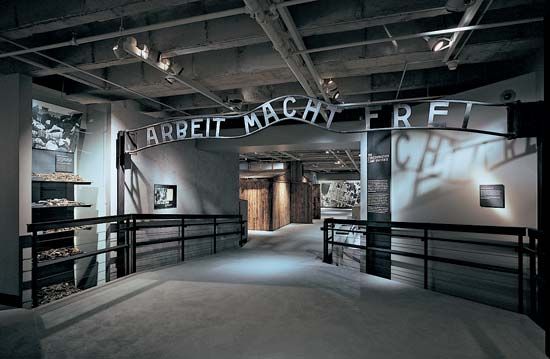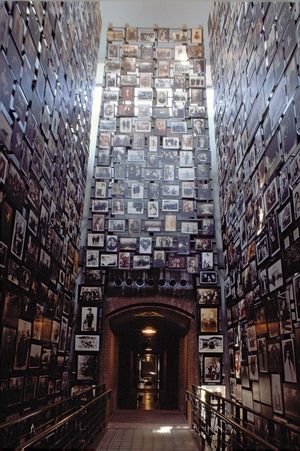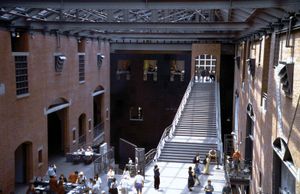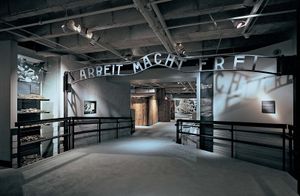United States Holocaust Memorial Museum
- Date:
- 1993 - present
United States Holocaust Memorial Museum, museum and memorial to the Holocaust, located in Washington, D.C., U.S. It was dedicated in 1993 to serve as the national Holocaust museum.
The museum’s permanent exhibit, titled “The Holocaust,” is divided into three parts—“Nazi Assault,” “Final Solution,” and “Last Chapter.” Upon entrance, visitors are issued an identity card with the name of a real person who was persecuted by Nazis or their collaborators. They are guided on a path through the three-level exhibit, which contains photographs, artifacts, and audio and video footage, as well as large-scale installations, including a Polish railcar that was used to transport Jews to concentration camps and that visitors are allowed to board. Throughout the exhibit, visitors are given a chance to learn about the fate of the individual on their assigned identity card. In the Hall of Remembrance—a hexagonal room that echoes the six-pointed Star of David and the six million Jews who died—located at the end of the permanent exhibit, visitors may pray, meditate, and light candles in remembrance of the victims.
In addition to its collection, the museum seeks to educate through various programs, including the Center for Advanced Holocaust Studies and the Academy for Genocide Prevention, which provides training in foreign policy. Its Web site includes online exhibitions featuring primary source material, personal stories, and a Holocaust encyclopaedia. The museum also offers special programming each year for International Holocaust Remembrance Day, which was established by the United Nations in 2005 to mark the anniversary of the liberation of the Auschwitz camp.
The Holocaust Memorial Museum, located adjacent to Washington, D.C.’s Mall, was designed by American architect James Ingo Freed, whose own family fled Germany during World War II. Freed created a space that he intended to be a “resonator of memory.” Though it made specific reference to no one specific site at which the Holocaust was carried out, its many elements were intended to evoke in the visitor a sense of unease, disorientation, separation, pressure, uncertainty, and imbalance.
The museum was the scene of tragedy in 2009 when an 88-year-old white supremacist, James W. von Brunn, shot and killed a security guard and wounded himself.

